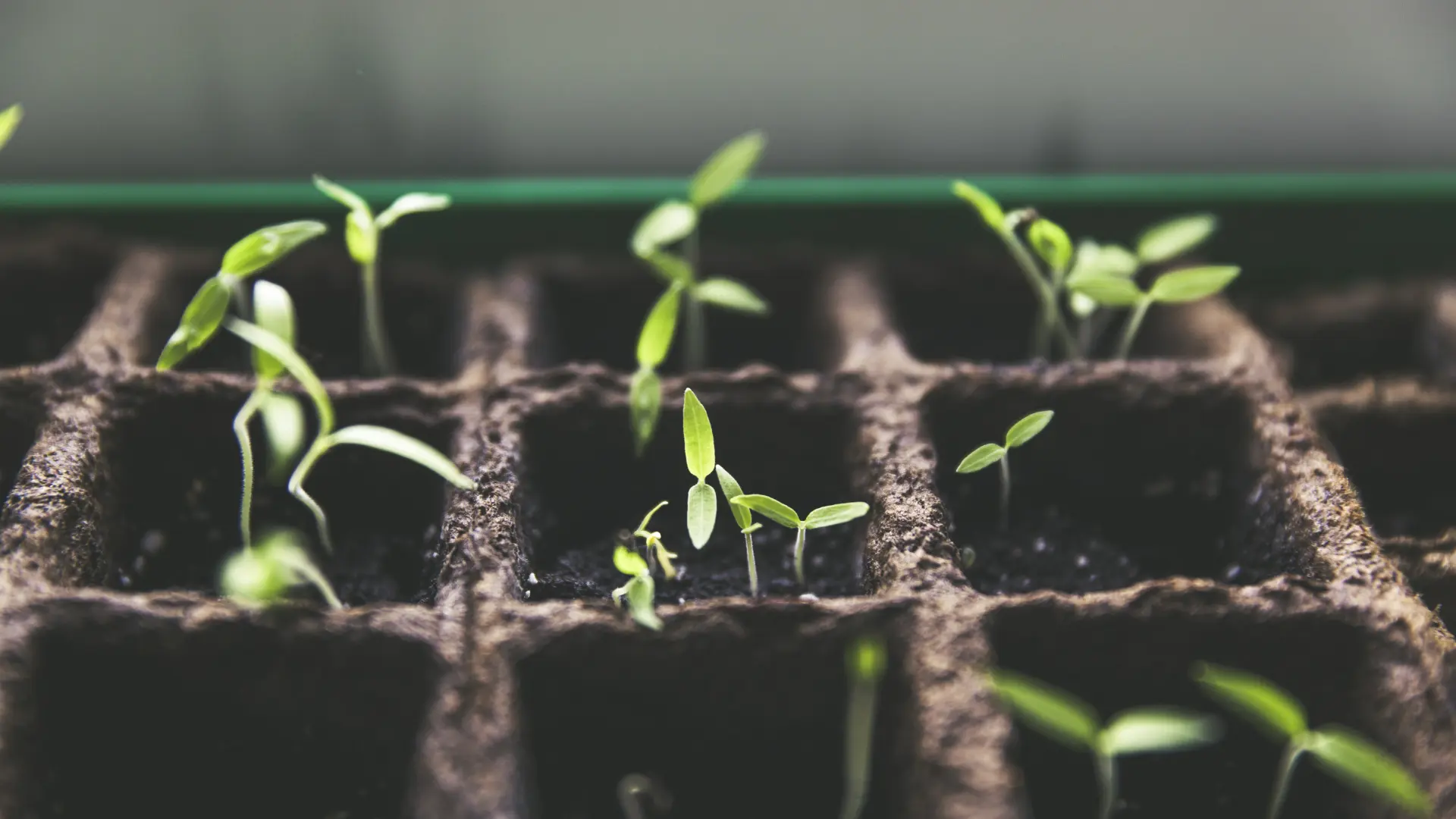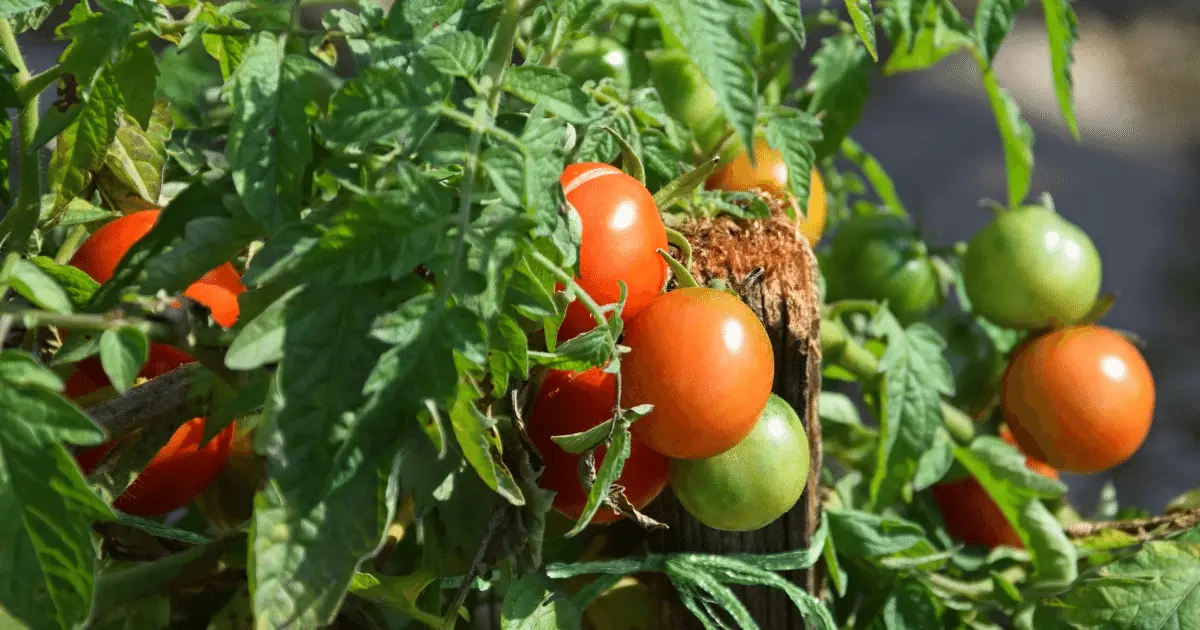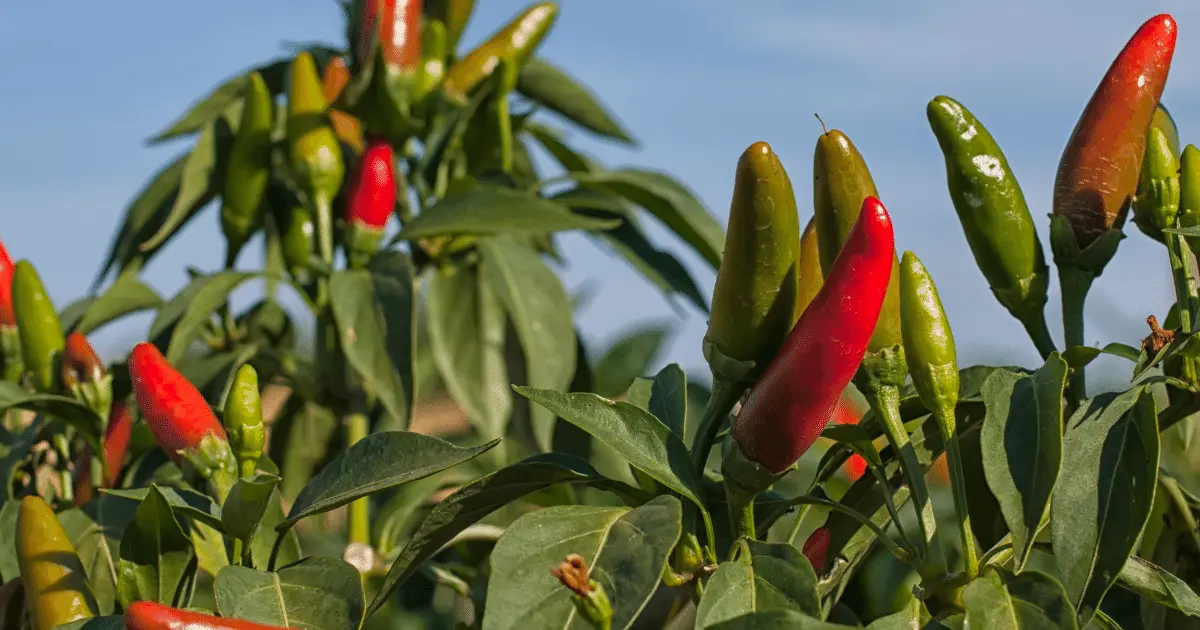Pepper and tomatoes are great companions in the garden and can be paired together in the kitchen. However, when it comes to planting them together, you should note that there may be an increase in the risk of spreading disease.

If you wonder if peppers and tomatoes can be planted together, the short answer is yes. But you have to follow the proper procedure for successful planting.
Can You Plant Peppers and Tomatoes Together?
Yes, you can. Tomatoes (Solanum Lycopersicum) and peppers (Capsicum annum) belong to the Solanaceae, commonly referred to as the Nightshade family. Tomato belongs to the genus solanum, which includes crops such as potato and eggplant, while pepper belongs to the genus capsicum, consisting of sweet and hot peppers. They are also warm-weather crops that have similar requirements for successful growth.

The main advantage of planting these two crops together is to attract the same pollinators, maximize yields from a small space and optimize soil conditions. Generally, peppers take a long time to ripen fully, which is why they need proper care all summer long.
On the other hand, tomatoes can yield for the entire season, and you only need one planting to provide your garden with ripe fruit all summer. Summarily, pepper and tomatoes are long-season crops that require many days to mature.
Benefits of Planting Peppers and Tomatoes Together
Peppers and tomatoes are crops that will grow well in warm weather, so planting them together will help each other grow. Below are some benefits you’ll get from growing both crops together.
1. You Can Trellis Both Plants
Peppers and tomatoes can be trellised to maximize their yields. They also require a steady water supply, a pH of about 6 or 7, and plenty of fertility.
2. Space Maximization
Both plants are always planted 1-2 feet apart for the best growth. Airflow is a significant factor in growth, so it’s essential to provide enough space for companion plants to thrive.
How To Plant Peppers and Tomatoes
Pepper and tomatoes thrive best during the hot weather. During this period, the diseases that affect both crops are common. Therefore, it is advisable to consider the space between each plant before planting. Doing this, you’ll be able to give a distance of about 1-2 feet.
Tomatoes

One of the best ways to plant tomatoes is to allow the soil to warm up above 60 degrees because planting in excellent soil can stunt their growth. Tomatoes are commonly grown from indoor seedlings and later transplanted into the garden. The seeds should be planted indoors as early as 6-8 weeks before the average date of the last spring frost.
Then they are usually transplanted into the garden 1-3 weeks after the last frost. Ensure you support the plants with stakes, and start supporting them before your plants are grown. The main reason is that staking the plants when fully grown can disrupt the root system as you drive the stake into the soil near them.
Next, plant your tomatoes deeper and let the transplanted plants be 1/3 or half deep into the ground. By doing this, the plants will grow from the root balls, roots, and some part of the stem buried.
Once you are done, fill them with compost and garden soil and add some extra organic ingredients, a few eggshells, and worm casting—finally, deep mulch your mixtures to enable them to keep weeds at bay. Also, ensure the plant’s root zone maintains warmth.
Peppers

To start, choose a planting site that’s sunny and well-draining. Grow your seeds indoors and plant them in warm soil at least 60 degrees.
Remember to support your plant with a stake, and don’t wait until they are fully grown before staking. Water and mulch your soil correctly, then pinch off the first flower to encourage more significant fruit production. Finally, harvest the pepper fruits properly
Challenges of Growing Peppers and Tomatoes Together
As a general rule, you can grow peppers and tomatoes together. However, a few challenges come with growing these two crops together.
1. They Are Susceptible To The Same Disease
Peppers and tomatoes are both in the Solanaceae family and host various pests, including mosaic viruses, hornworms, armyworms, and nematodes. Also, they are vulnerable to common pests like aphids and leaf miners.
Therefore, if one plant becomes infected, the disease can quickly spread to the other plant. To avoid this, practice good crop rotation and avoid planting peppers and tomatoes in the same spot yearly.
2. Tomatoes are Taller Than Peppers
This can be a problem because tomatoes can shade the pepper plants preventing them from getting the sunlight they need to grow. To avoid this, stake your tomato plants, so they don’t overshadow the pepper plants.
10 Tips For Planting Peppers And Tomatoes Together
When planting peppers and tomatoes together, you should take note of the following:
- Make sure you space the plants correctly. Plant the tomatoes 18 inches apart and the peppers 24 inches apart. Also, use trellis and cages to keep the plants growing tall. Adequate spacing will give these plants adequate air circulation and reduce diseases.
- Do the research and choose the suitable varieties of both plants. Some tomato varieties that grow well when planted with peppers include Early Girl, Better Boy, and Brandywine. While pepper includes Jalapeno, Serrano, and Habanero.
- Prune the plants at the right time. Failure to do this means diseases, especially the tomatoes, may infect the plants.
- Check the plants regularly for pests before they affect other plants.
- Avoid overwatering or underwatering. The tomato plant, in particular, needs up to 1.5-inch of water per week, so make sure you give them what they need. Use soaker hoses or drip irrigation to prevent diseases from taking hold on leaf surfaces.
- Water the base of the plant rather than the leaves. Wet leaves or foliage leaves make these plants more susceptible to fungi and bacteria infestation.
- Add other companion plants like parsley or low-growing crops like lettuce beneath the canopy of both plants.
- Stake and trellis your tomato and pepper plants. Don’t let them fall over.
- Give both crops enough nutrients every two weeks throughout the main growing season.
- Provide proper soil preparation and planting procedure, as both crops thrive best when adequate amounts of organic matter are incorporated into their soil before they are planted.
